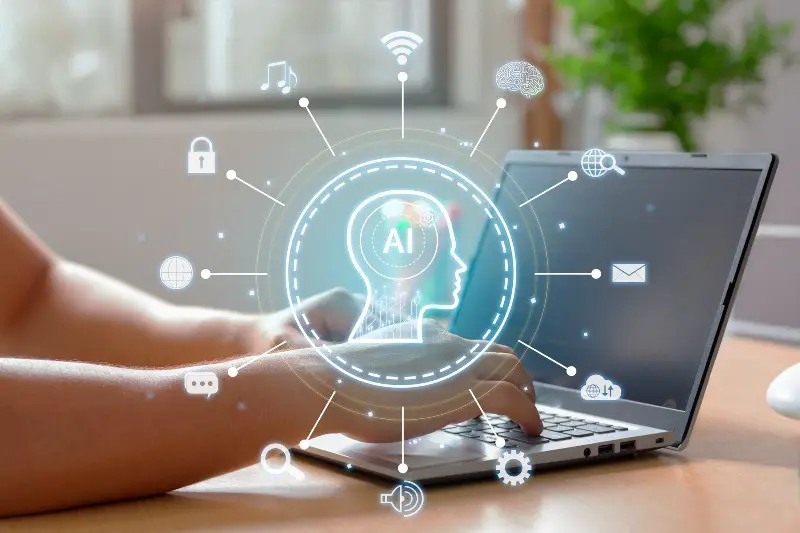Have you ever heard of Black Box AI and wondered what it’s all about? It sounds like something from a science fiction movie, but it’s actually a real thing in the world of technology. In this blog post, we’re going to break down the concept of Black Box AI into simple terms that anyone, even someone with an eighth-grade education, can understand.
Black Box AI refers to a type of artificial intelligence that is complex and not easily understood. It’s like a magic trick; you can see what it does but not how it does it. This is becoming increasingly important in various fields, including healthcare, education, and computer vision. We’ll explore how Black Box AI impacts these areas and the ethical considerations it brings.
Healthcare and Black Box AI
In healthcare, Black Box AI is like a high-tech tool that helps doctors diagnose diseases by analyzing medical images and patient data. It’s really helpful because it can find things that might be hard for human doctors to see. This means diseases can be caught early, which is great for treatment.
But, there’s a downside. Since doctors can’t always see how the AI reached its conclusions, they might not fully trust it. It’s like getting a health tip from someone without knowing why they’re giving it. In medicine, understanding the ‘why’ behind a diagnosis is as important as the diagnosis itself.
Students and Educators and Black Box AI
For students and educators, Black Box AI can be like a super-smart tutor that knows how to teach in the best way possible. It can look at how students learn and suggest personalized ways to improve. This could make learning faster and more fun.
However, there’s a challenge. If teachers and students don’t understand how the AI decides on the best way to teach, it can be hard to trust its advice. It’s like getting study tips from a mysterious stranger. Without knowing the logic behind its suggestions, it’s difficult to fully embrace its potential in education.
Computer Vision and Black Box AI
Computer Vision is all about teaching computers to see and understand the world around them, like humans do. Black Box AI helps these computers
recognize things in images and videos, which is super cool. It can be used for everything from helping self-driving cars see the road to letting your phone recognize your face.
But, just like in healthcare and education, not knowing how Black Box AI in computer vision works can be a problem. If a self-driving car makes a wrong decision, and we don’t know why it’s hard to trust it. It’s like having a friend who gives you directions without telling you how they know the way.
Myths vs. Facts about Black Box AI
Myth 1: Black Box AI always knows best. Fact: AI can be really smart, but it’s not perfect. It makes decisions based on the data it was trained on, and sometimes that data can be flawed.
Myth 2: Black Box AI is too complicated for anyone to understand. Fact: Black Box AI is complex, but experts are working on ways to make it more understandable. This way, we can better know how it makes its decisions.
Myth 3: Black Box AI doesn’t need any human help. Fact: Even though AI can do a lot on its own, it still needs humans. People provide the data it learns from and help guide its decisions.
FAQ
Q1: What exactly is Black Box AI? Black Box AI is a kind of AI where the way it makes decisions is not clear. It’s like a chef who makes a delicious meal but doesn’t share the recipe.
Q2: Why is transparency in Black Box AI important in healthcare? In healthcare,
knowing how AI reaches its conclusions is crucial for trust and accuracy. Doctors need to be sure about a diagnosis before treating a patient, and if the AI’s process is unclear, it’s hard to have that certainty.
Q3: How does Black Box AI impact learning and teaching? Black Box AI can personalize education, but without understanding how it works, educators might not be able to fully trust or utilize it. Knowing why an AI system recommends certain learning strategies can help teachers adapt their teaching methods more effectively.
Q4: What role does Black Box AI play in Computer Vision? In Computer Vision, Black Box AI helps in recognizing and interpreting images and videos. But if we don’t understand the decision-making process, it can lead to mistrust, especially in critical applications like autonomous driving or security systems.
Q5: Can Black Box AI become more transparent? Yes, efforts are being made in the field of explainable AI (XAI) to make AI systems more transparent. This means developing AI that can explain its decisions in a way that humans can understand, increasing trust and effectiveness.
Google Snippets
Black Box AI: AI systems where the decision-making process is not transparent or understandable to observers, users, or even its creators.
Ethical AI: The aspect of AI development and usage focused on ensuring fairness, accountability, and transparency in AI systems.
Computer Vision AI: A field of AI which enables machines to interpret and understand visual information from the world around them, much like human vision.
Black Box AI Meaning – From Three Different Sources
AI Today Magazine: Defines Black Box AI as AI systems whose internal mechanisms and decision processes are not visible or understandable to users.
Tech Simplified: Describes Black Box AI as artificial intelligence where the logic behind its decisions remains unclear, even to its developers.
Future Tech News: Explains Black Box AI as AI that operates without revealing its internal processes, often leading to challenges in understanding and trusting its decisions.
Did You Know?
- The term “black box” originally comes from World War II aviation, where flight recorders were called black boxes.
- Some Black Box AI systems can analyze and interpret data in ways that even the best human experts can’t, leading to new discoveries and innovations.
Conclusion
Black Box AI is a fascinating and important part of modern technology. Its applications in healthcare, education, and computer vision are full of potential but also come with the challenge of understanding how these AI systems make their decisions. As technology continues to advance, the need for making AI more transparent and ethical becomes increasingly important. Understanding Black Box AI is key to harnessing its full potential while ensuring it benefits everyone.
References
- Explainable AI that uses counterfactual paths generated by conditional permutations of features. This method is used to measure feature importance by identifying sequential permutations of features that significantly alter the model’s output. The paper discusses the evaluation strategy of comparing the feature importance scores computed by explainers with the model-intern Gini impurity scores generated by the random forest, which is considered as ground truth in the study.
- Thinkful offers insights on how to address the “black box” problem in AI through Explainable AI (XAI) and transparency models. They discuss techniques like Feature Importance Analysis, Local Interpretable Model-agnostic Explanations (LIME), SHapley Additive exPlanations (SHAP), Model Distillation, and Decision Rules, which are designed to make AI models more interpretable and transparent. This is especially important in applications where decisions can have far-reaching consequences, such as healthcare or finance
- Superb AI‘s blog discusses the challenges of the reliability of AI and its adoption into society, given the opaque nature of black box models. The widespread use of AI technologies presents issues related to data bias, lack of transparency, and potential infringement on human rights. The article addresses how Explainable AI is crucial for building AI systems that are not only powerful but also trustworthy and accountable.






